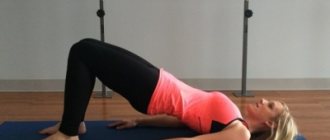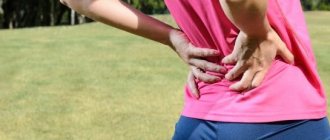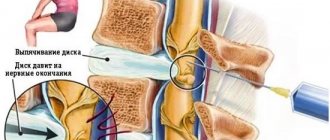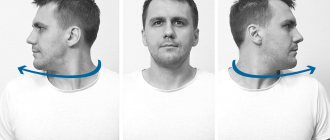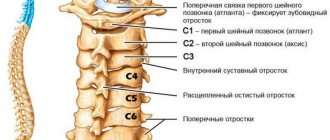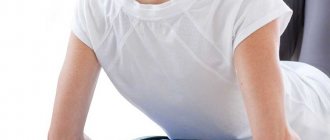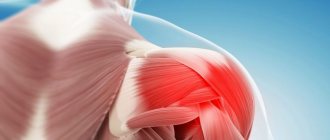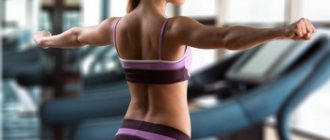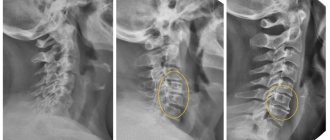Osteochondrosis is a fairly common disease that affects about 25% of the world's population. Previously, older people predominantly complained of pain in different parts of the spine, which was associated with age-related changes in the tissues of cartilage and joints. Nowadays, the patients of chiropractors are often representatives of young people - sedentary work makes itself felt. One of the solutions to the problem is the treatment of osteochondrosis with yoga.
What results can you expect from the classes?
Yoga for osteochondrosis of the cervical, thoracic and lower back, when performed correctly asanas, gives the following positive results:
- increasing body mobility (bending, turning);
- getting rid of headaches;
- improvement of muscle condition;
- reduction of pain in the back (increasing effect);
- normalization of blood circulation.
Please note that it is recommended to start classes only after consulting with your doctor. Yoga for cervical osteochondrosis for beginners also requires the participation of a specialist, because incorrectly performed asanas can harm vertebrae that are severely worn out.
Pros and cons of yoga
Yoga is an ancient spiritual practice, but today we will look at yoga as a tool for working on the physical body. Many people already use yoga asanas for the back to prevent or treat osteochondrosis.
It is generally accepted that yoga is a universal remedy for the treatment of osteochondrosis. However, this is not quite true. Classes are clearly indicated for the prevention of the disease, but if a person is diagnosed with stage II or III osteochondrosis, incorrectly performed asanas may not only not be beneficial, but also cause harm to worn-out vertebrae. A set of exercises for osteochondrosis of the cervical spine should be performed with great caution. For physiological reasons, this part of the spine is the most vulnerable: excessive impact on damaged segments of the spinal column can lead to injuries and intervertebral hernias. Therefore, before starting classes, you must consult with your doctor, and it is better to entrust the choice of asanas to an experienced yoga therapist or exercise therapy instructor.
When practicing yoga, you should not expect instant results: exercises should be performed regularly and over the course of months. But there will definitely be a therapeutic effect, this is confirmed by the experience of thousands of people who, with the help of simple exercises, have already restored the health of their spine.
Tadasana with backbend - opening of the thoracic region
There are a number of complex exercises that provide opening of the thoracic region and relief from pain. Tadasana involves standing evenly and firmly on your feet.
- Place your legs side by side and straighten your back as much as possible;
- Extend your arms along your body. An effective idea is to imagine a rope tied to the crown of the head, stretched upward;
- Expand your chest as much as possible;
- Pull your stomach in;
- The legs and kneecaps should touch;
- Try to stand in this position for several minutes.
This asana is effective because it can straighten the body of a person who is accustomed to constantly being in a bent state. The straight state of the spine ensures the circulation of energy throughout the body. Next, we stretch the spine with a deflection.
- Assume the Tadasana position;
- Turn your palms outward;
- Bring your shoulder blades together;
- Tilt your head back as far as possible;
- Performing movements without jerking, try to hold the position for as long as possible.
These two simple but useful exercises serve as a smooth start to the treatment of osteochondrosis with yoga.
Indications and contraindications for osteochondrosis
Yoga classes are indicated for osteochondrosis of the thoracic and lumbar spine. In case of cervical osteochondrosis, as well as in severe cases of the disease, you will need to consult your doctor.
Yoga has proven itself to be effective in eliminating symptoms of osteochondrosis such as:
- stiffness of movement when tilting and turning the body;
- headache;
- muscle weakness;
- noise in ears;
- burning and aching pain in the back muscles;
- dizziness;
- a feeling of coldness in the extremities, as a result of poor circulation in the tissues.
The video presents a basic set of asanas for osteochondrosis:
When are classes contraindicated?
Yoga for osteochondrosis of the lumbar, thoracic and cervical areas can bring significant benefits, but not in all cases. You should avoid such activities if there are contraindications. They are as follows:
- exacerbation of osteochondrosis or other diseases;
- presence of elevated temperature;
- problems in the cardiovascular system, including a recent heart attack or stroke;
- spinal injuries, the presence of displacements, protrusions;
- oncology.
Yoga for cervical osteochondrosis and other back problems can be combined with other therapeutic methods recommended by the attending physician.
Yoga at home for cervical osteochondrosis
When the basics of performing asanas have already been mastered, you can conduct classes at home. In this case, it is necessary to adhere to a number of rules, including:
- moderation of loads, they need to be increased gradually;
- smoothness of movements;
- refusal to exercise if severe pain occurs;
- good emotional mood;
- proper preparation of the room (presence of a rubber mat, ventilation);
- wearing comfortable clothing that does not restrict movement.
If you want to learn more about the treatment of osteochondrosis with yoga, please contact our company staff.
Main causes of back pain
- Local effect on pain receptors. For example, a hernia that compresses a nerve root, or osteophytes, i.e., bone growths on the vertebral bodies that, like needles, prick the nerve endings, thereby causing pain. In this case, the person will feel pain in the place where the nerve compression occurred.
- Radiculopathy
is the spread of pain along the affected nerve, like an electrical wire. For example, compression of a nerve by a hernia occurs in the cervical spine, and a person feels pain on the same side of the back, spreading throughout the entire arm. And in the case of the lumbar region, the entire leg may be painful. - Spondyloarthrosis
is pathological changes in all components of the joint, primarily articular cartilage. This applies to the facet joints, which are the point of articulation between the articular processes of the overlying and underlying vertebrae. In osteochondrosis, as a result of degenerative changes in the intervertebral disc, a decrease in its height is observed. This increases the stress on the facet joints. As a result of chronic overload, degenerative changes and inflammation can occur in them, which causes pain. - Myofascial pain syndromecaused
by local muscle spasms or tightness, i.e. triggers. Pain can be provoked by direct pressure on these points or movement of these spasming muscles. Fascia is a muscular sheath that sometimes shortens, similar to how clothes shrink when washed improperly. This happens for various reasons, such as a sedentary lifestyle or injury. As a result of such shortening, the fascial sheath becomes tight, it compresses the muscle - and the muscle itself has to reflexively contract. As soon as muscle compression reaches a certain force, the muscle automatically pinches the nerve endings, veins and arteries that pass through it. But the most important thing is that the clamped muscle can no longer contract normally. Consequently, such a muscle will work worse and weaken.
However, muscles spasm not only due to shortening of the fascial sheath.
If a muscle has received microtrauma or is overstrained, the transport of substances through the cell wall of the muscle is disrupted. Calcium ions are released, which leads to damage at the cellular level. Excessive amounts of calcium provoke contraction of the myocyte, the muscle cell. And a muscle that is in a spasmodic state provides an increase in intramuscular pressure, which causes a deterioration in microcirculation. With prolonged contraction, a large amount of work is performed, which expends energy, and a period of relaxation is required to replenish energy.
If there is no relaxation period for a long time, compensation mechanisms are triggered: the energy in the cell is replenished not due to newly arrived nutrients from the bloodstream, but due to the existing reserves within itself, which leads to ineffective work. An even longer load that exceeds the capabilities of the muscle causes a breakdown of compensatory mechanisms - which leads to the accumulation of toxins in muscle tissue and, as a result, to the formation of a trigger point.
The resulting pain provokes muscle contraction. This creates a vicious circle: pain - muscle tension - pain. Also, this circle may be accompanied by a violation of the structure of the cartilage of the joint and bone. When pain spreads through the muscles, nerves may be involved, through which the pain syndrome can be transmitted to distant areas (for example, to the arms or legs for pain in the spine).
Most of the pain in degenerative pathologies of the musculoskeletal system is caused by myofascial pain syndrome.
Even if you remove the original source of pain, with MPS already formed, the pain will not go away; moreover, improper distribution of the load in areas adjacent to the affected muscles will provoke microtraumatization and inflammation. Therefore, it is important to treat not only arthrosis of the joints, protrusion and herniated intervertebral discs, but also the surrounding muscles. How to do this? With the help of a qualified, experienced massage therapist who can provide not only a relaxing massage, but also a deep, quite painful one that breaks trigger points in the muscles.
So, you have learned the main causes of back pain. Let's talk about how to remove or minimize the impact of sources of pain.
First, you need to undergo an examination to understand what is the cause of the pain. This may be an x-ray, which will show a decrease in the height of the intervertebral discs, displacement, instability of the vertebrae, scoliosis and other possible changes in posture. Or an MRI, which will show the width of the spinal canal, the condition of the nerve roots and soft tissues. In accordance with the clinical picture, an appropriate health program is selected.
If we talk about osteochondrosis in general, then correctly constructed physical activity will be the optimal solution to get rid of pain.
The movement of the spine in different planes will improve the nutrition of the intervertebral discs and will help increase their height. As a result, it becomes possible for protrusions and even hernias to disappear if they are not too old. With the help of correct physical activity, you can influence poor posture. By changing myofascial tone, we will help correct posture and eliminate corresponding back pain.
Impact of asanas on the spine
In a properly selected set of asanas for the treatment of osteochondrosis, there is no force load, jerking or sudden movements. The exercises have a smooth transition, in which the impact is aimed first at correcting the position of the spine, and then at strengthening the muscles.
Important! Yoga does not exclude other methods of treating osteochondrosis prescribed by a doctor.
The positive aspects of yoga for the spine are undeniable:
- With the help of a set of exercises you can stretch your muscles and strengthen your muscle corset;
- regularly performed asanas improve blood circulation in tissues, muscles and endplates are better saturated with oxygen and nutrients;
- special exercises help to effectively relax the muscles, and, as a result, get rid of spasms and pain;
- yoga reduces wear and tear of intervertebral discs and articular cartilage;
- in some cases, exercise can promote the regeneration of joint tissue;
- Yoga asanas improve overall health;
- yoga allows you to improve your posture;
- exercises promote the healing of damaged muscles and prevent their re-injury, inhibit the aging process of connective tissues;
- With the help of regular yoga classes, you can achieve lasting (unlike drug treatment) results.
Stages of development
Initially, changes in the spine do not cause problems, but over time, the functioning of all body systems occurs. The disease has 4 stages:
1. The standing height of the diseased intervertebral disc decreases. Cracks in the annulus fibrosus occur. Pathology does not go beyond one component.
2. The muscles and ligaments attached to the disc come closer together. They lose tone and sag. The defect affects nearby vertebrae. They gain extra mobility. The vertebral segment becomes increasingly less stable. The vertebrae can shift and slip, causing spondylolisthesis.
3. Unnatural protrusion occurs, the development of arthrosis and dislocations in the intervertebral discs.
4. The affected parts try to adapt to new conditions, get rid of excess mobility using the body’s strength and protect the spine. As a result, osteophytes are formed - bone growths. They injure the nerve roots of the spinal cord.
The last stage, in the absence of treatment for spinal osteochondrosis, manifests itself in the form of severe aching pain in the problem area, but then the pathology takes on a hidden form. And the patient stops feeling discomfort. A bone shell is formed on the vertebrae, which “walls up” the entire motor segment.
Rules for practicing yoga
Important! In severe forms of osteochondrosis, before starting exercise, you should consult a doctor about its advisability.
To achieve positive dynamics in osteochondrosis during yoga, it is important to follow a few simple rules:
- You should not immediately strain your body, which is not prepared for physical activity. Start practicing yoga once or twice a week for 10-15 minutes. Significant loads with diseases of the spine can only do harm;
- Performing exercises should only cause pleasant pain from stretching the muscles, but not acute pain. If this happens, it is better to refuse gymnastics;
- follow the correct technique for performing asanas, otherwise the exercises are unlikely to bring the expected result;
- Do not start yoga classes when you are hungry or immediately after eating. After eating, at least 1.5-2 hours should pass;
- Yoga classes should be carried out in an appropriate psycho-emotional mood. Think about healing, restoring the health of the spine, increasing the overall tone of the body, harmony with the outside world;
- Don’t give up if yoga asanas don’t work out the first time. As the muscle corset strengthens and the spine stretches, the asanas will become better each time;
- adjust your diet to increase the content of light plant foods. This will help get rid of extra pounds, and therefore excess load on the spinal column;
- the practice room should be well ventilated, ideal if you can do yoga in the fresh air;
- to practice yoga on the floor, you need to consider the presence of not only a flat surface, but also a special rubberized mat;
- Yoga clothes should not restrict movement. It is better to give preference to natural fabrics that absorb moisture well and do not impede the “breathing” of the skin;
- The optimal time for classes is morning. If this is difficult, always perform the exercises at the same time of day;
- experienced yogis recommend performing asanas in complete silence; you need to exclude any distractions and fully concentrate on your actions;
- You should not start classes if you are in a bad mood or irritated;
- poor health is a reason to refuse gymnastics until your health condition returns to normal.
Set of exercises
It is better to entrust the choice of a complex of asanas to your yoga therapist, who will take into account the stage of osteochondrosis, its clinical manifestations, and concomitant diseases. We will give just a few exercises that have a beneficial effect on the health of the spine, regardless of the age and physical fitness of the patient with osteochondrosis.
Utthita Trikonasana. To perform the exercise correctly, you will need a chair with a backrest. Stand facing the back of a chair, lunge back with your left leg, placing the inside of your foot on the floor. Turn your body to the right; you can lean your left hand on the back of the chair. Fix your body position for half a minute or a minute. Repeat the exercise on the other side. Utthita Trikonasana relieves tension from the muscles of the back and pelvis, turns the spine, makes it more mobile and flexible. The involved neck muscles are relieved of spasms.
Vrikshasana. This exercise is performed standing. Bend your right leg at the knee and place your foot on the inner surface of your left thigh. The arms are slightly bent at the elbows, palms clasped above the head. It is necessary to maintain the position for 15-30 seconds.
The asana helps to naturally stretch the spine, expand the hip joints, and relieve tension from the muscles of the neck and lower back. At the initial stage of training, Vrikshasana can cause slight dizziness. If this happens, the time for fixing the body position can be reduced.
Utthita parsvakonasana. Take a standing position, spread your legs slightly wider than shoulder level. Bend your left leg at the knee at an angle of 90 degrees and transfer your body weight to it. In this case, the foot can be turned to the left. As you exhale, spread your arms to the sides, pull your spine to the left, while your head should be turned to the right. Fix your body position. Repeat the exercise using your right leg. The exercise is effective for osteochondrosis of the cervical and thoracic spine. When performed regularly, it allows you to get rid of chronic pain in the neck and between the shoulder blades.
The video presents a set of asanas for osteochondrosis of the lumbar spine:
Vasisthasana. At its core, this asana is similar to the plank, but is performed on the side. Lie on your right side. Lift your body weight onto your right arm, with your left arm extended up above your head. The asana strengthens the muscles of the spine, forearms, and hips.
Anantasana. The asana is performed in a lying position. Lie on your left side, support your head with your left hand, lift your right leg without bending the knee. Try to grab your toes with your right hand without jerking or sudden body movements. It is ideal if you can fix the position with the grip for 5-10 seconds. Change your body position to repeat the exercise on your left arm and leg. The asana gives tone to weakened muscles that cannot be used during everyday activities, relaxes and stretches the spine.
Effective asanas for osteochondrosis of the cervical spine:
Rules
Before engaging in any type of activity, you should familiarize yourself with the rules of the technique. Otherwise, you can harm your health and worsen the situation.
Yoga for the thoracic spine is effortless. The movements are smooth, stretching all the muscles involved. Tension should not be painful.
You need to start with a small load, gradually increasing it. It is better to write down your feelings so that later you can understand which exercises are more effective.
First, be sure to stretch your neck muscles:
Let's stand up straight. We hold the tail of hair in our fist and pull it up, and lower our shoulders with force down.
Then you can move on to doing the exercises.
